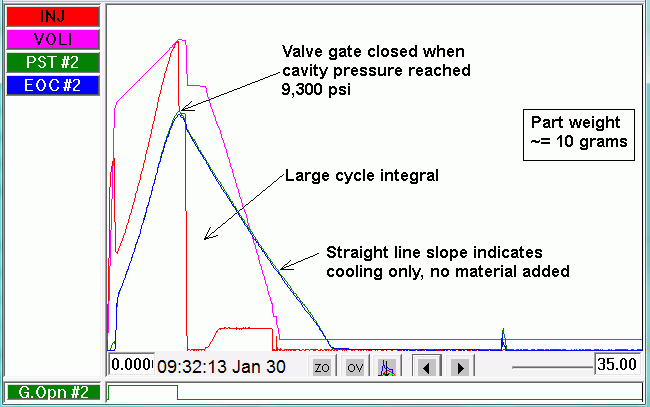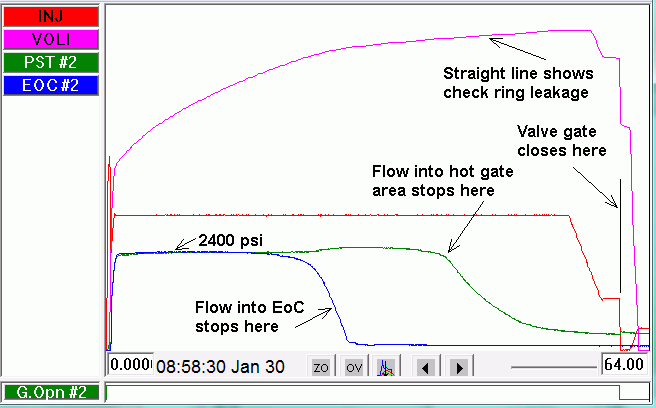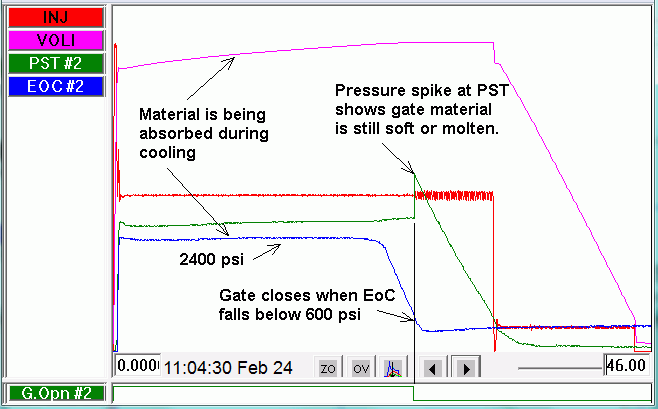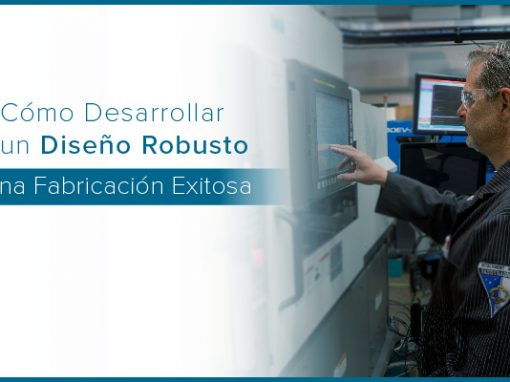Tip of the Day 180: Valve Gates and Thick Semi-Crystalline Parts
“You can’t use cavity pressure control of valve gates in semi-crystalline materials.”
Or so I was told.
I received this advice at NPE 2006. We were running Winzeler Gear’s “Gear Gizmo” mold. This had independent valve gate control in a family tool running Delrin. And we WERE controlling with cavity pressure, alternating between the three cavities to be sure each was full and “packed” before doing the next one.†
However, this meant that there was no hold time for the first two cavities. As soon as one was packed we switched to the other (see footnote† for process graph). And the parts were fairly thick. As discussed in tip 178, the semi-crystalline Delrin never got a chance to absorb all that it might have with a long hold time. As a result, the parts would shrink more (not having enough molecules) and the holes for the hubs would get smaller. Then the gears would bind up, often 2 weeks after the parts were made.
So I tried up an experiment to see whether one could pack enough material into a part using a quick rise in pressure so that the gate could be closed early. The process (in PP) looked like this:

The process “worked”. But the parts had sink, I think even at 12,000 psi pack.
Next I left the gate open until the part was entirely finished, both at the gate and end of cavity sensors. This took over 60 seconds.

See tip 146 for discussion of the rise in the post gate curve and tip 179 about seeing check-ring leakage. Also the footnote‡ for what happened to these parts after they cooled.
In the above process, the gate pin would not close because the part had gone solid by the time the gate pressure fell off.
There IS a Cavity Pressure Control Method for Thick Parts
The eDART™ valve gate control allows you to shut a gate on falling pressure instead of rising.

Per the research from the ANTEC paper on controls, a decoupled 2 process is sufficient for fill and pack in these thick, semi-crystalline parts. It will absorb most viscosity variation. Cavity pressures are determined mostly by hold. We then set the threshold for falling pressure at End of Cavity at about 600 psi. This does several things.
- Ensures that the pin can close while the gate area is still soft.
- Ensures that all the material that can get into most of the part has got there through shrinkage during hold.
- Prevents a hot area near the gate from absorbing more than it should into a highly crystalline structure and causing warp.‡
- Reduces differences in final pressures across the part thus reducing stresses.
Therefore, if you need to control valve gates in a thick, semi-crystalline part, a good strategy is to allow the part to “pack” (shrink) during hold until the EoC freezes. Then close the gate.
† Gear Gizmo Process

‡ Hot Gate Area => Warp
The mold we are using in the lab has no cooling in the gate block. Those gates are HOT. In the process with the long hold time, the material near the gate stays molten far beyond the time when the rest of the cavity freezes. Slow cooling rates (very slow in this case) allow many more crystals to form, probably of a different size (larger) as well. These become a relatively stiff structure that cannot shrink much. When the B side of the part cools and does shrink, the part bows away from the gate area.
Perhaps this image will help. Remember that this is with a long hold that allows all the crystals to form near the gate that possibly can.


